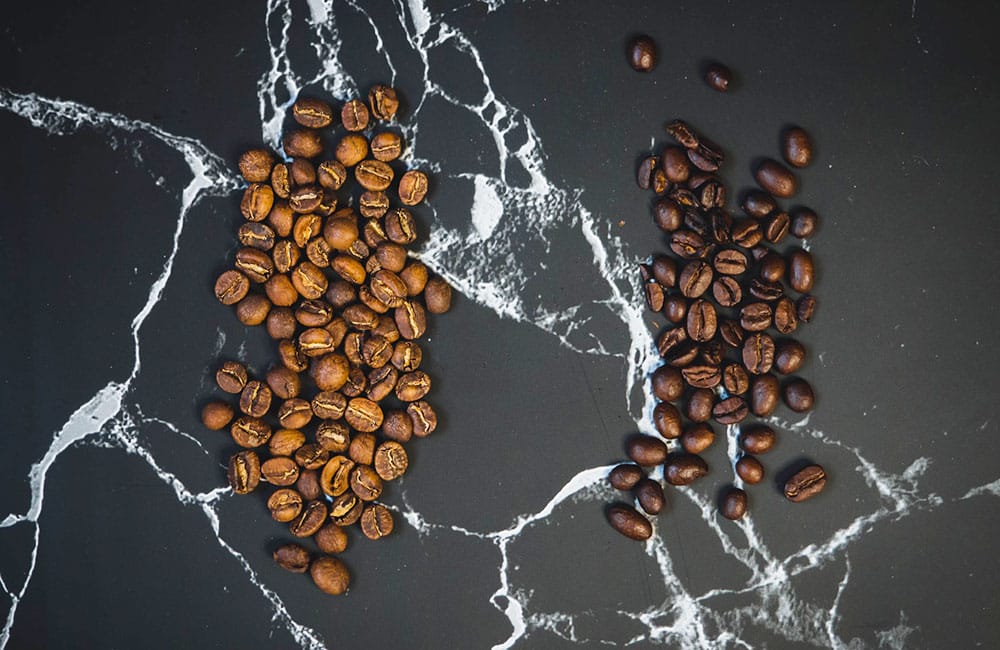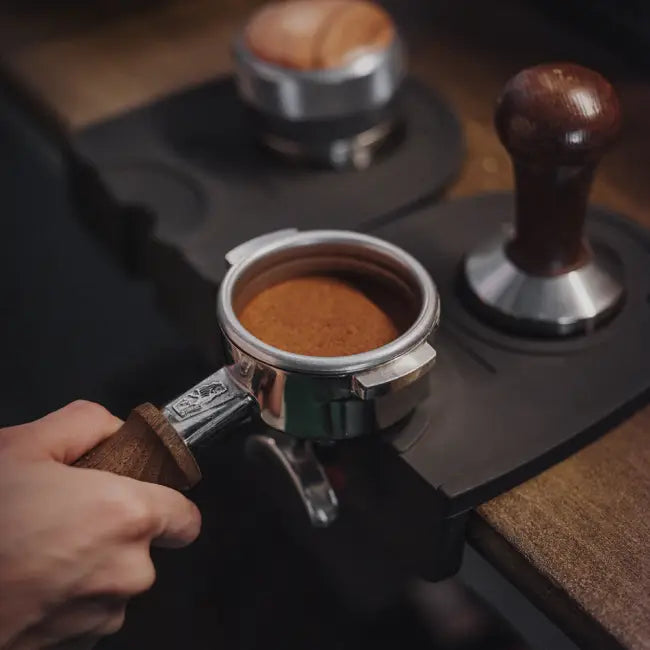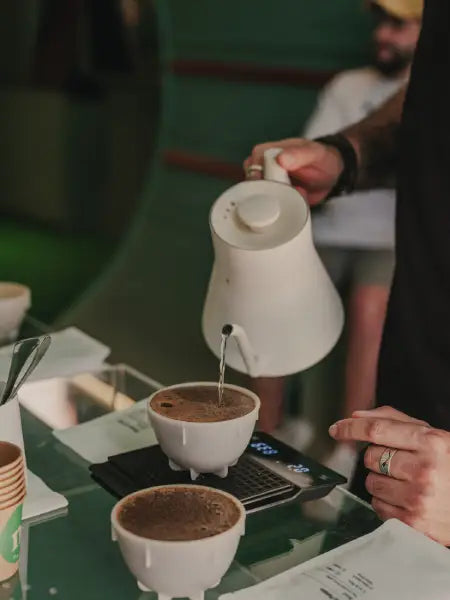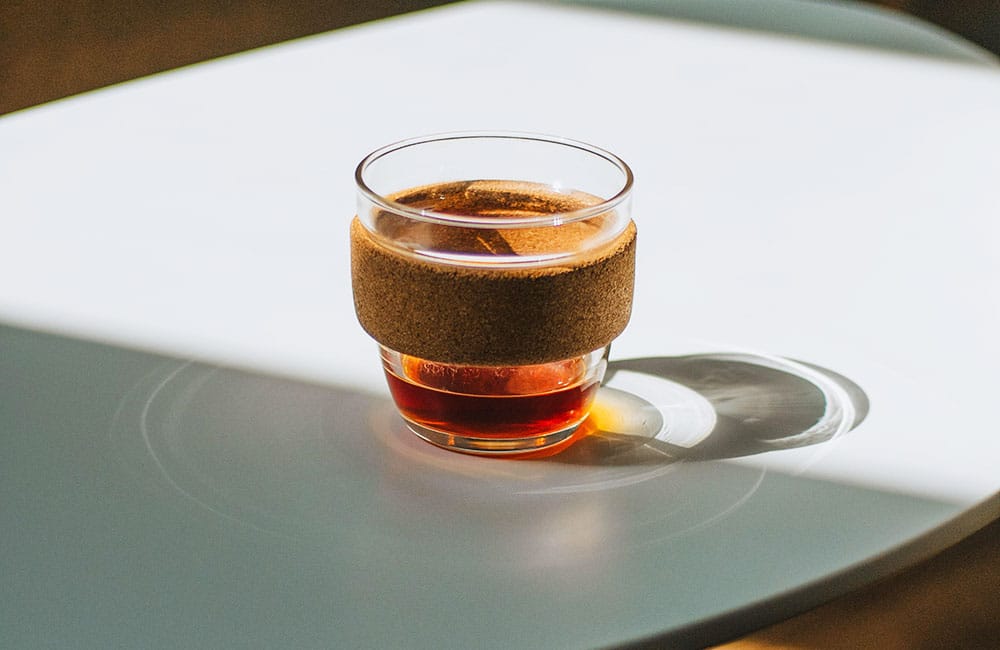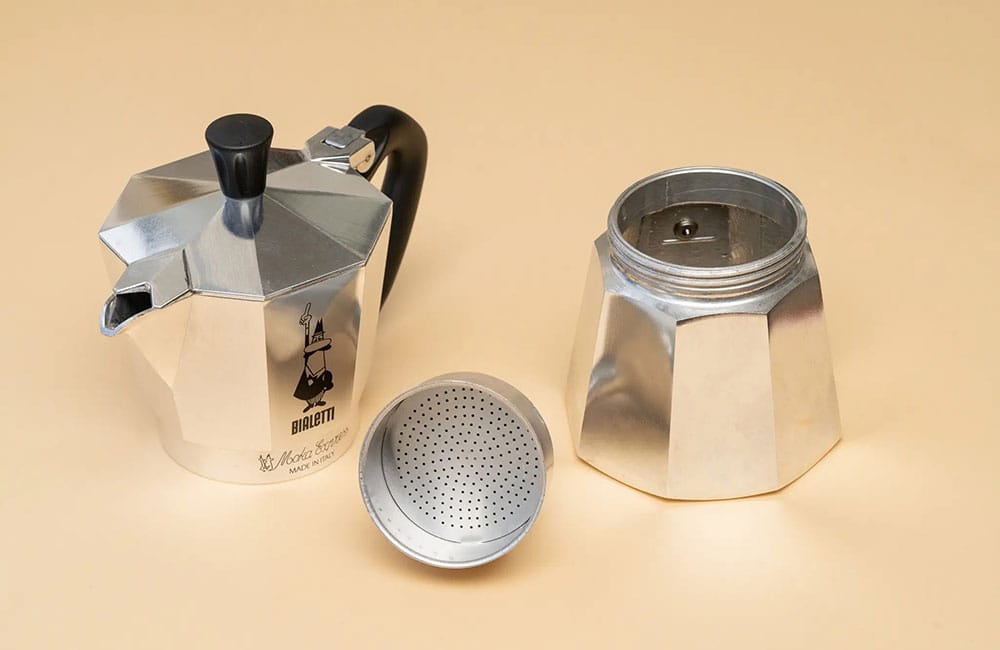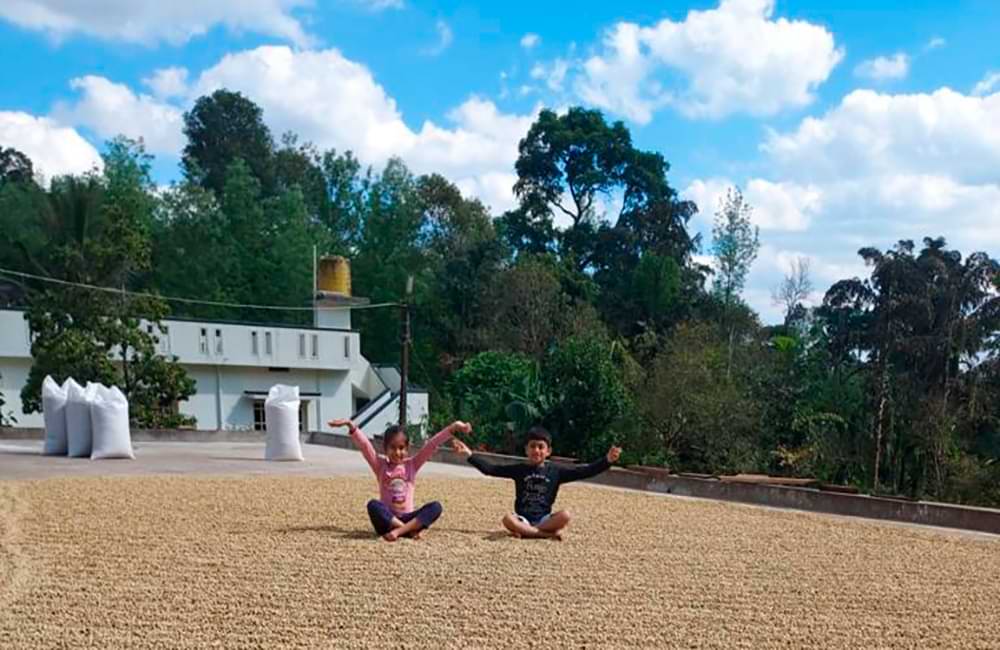Quality coffee, specialty coffee
Quality coffee is like any other product; it requires knowledge, attention, and care throughout the entire chain, from the coffee farmer to the cup.
Let's take a potato omelet, for example. It's a simple dish, isn't it? All you need—in its most basic form—is potatoes, eggs, oil, and salt. But we all know that there are potato omelets, and then there are potato omelets. The one our grandmother made, despite using the same ingredients, is nothing like the one we buy at the supermarket.
What's the difference? The better the ingredients, the better the tortilla; the know-how that comes from 60 years of experience and the love, lots of love, from our grandmothers.
To achieve a quality cup of coffee, the main ingredient must be the right one. The second, water, is also important. And finally, you need a knack for it (and some theoretical knowledge). We can save love for the movies, although a pinch doesn't hurt.
So what do we need to make a specialty, quality coffee? Primarily, good coffee.
And what makes a coffee good? That's what we're going to explain next because, as we said in another post about specialty coffee, "all coffees are equal, but some coffees are more equal than others."
For us, good coffee, quality coffee, is synonymous with specialty coffee.
How to identify quality coffee
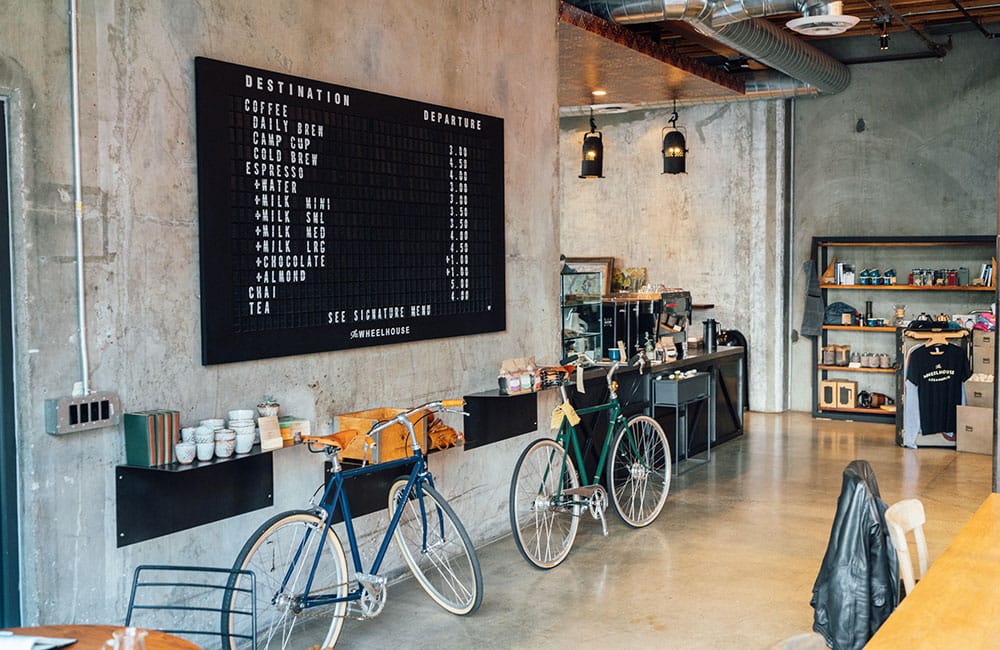
To identify a quality coffee we must know what separates it from the rest
To identify quality coffee, we must be aware of what happens throughout the entire production chain. This is because every link affects the final product.
We can divide the production chain into different phases, which will make it easier for us to understand why each step is important.
First, we can talk about the cultivation phase. This begins with planting and ends with harvesting. The second phase is the processing and drying phase, until the coffee is ready for export. In these two phases, the coffee farmer is the most important person.
The third phase is storage and export, including transportation. Here, exporting/importing companies and coffee roasters play an important role alongside the coffee grower.
The fourth phase is roasting and packaging. In this phase, the roaster is in charge.
The fifth and final phase is preparing coffee as a beverage. This can be done in a coffee shop—and we'll see what we should look for to find a good one—or at home. Depending on where this phase takes place, the most important person will be the barista or ourselves.
We'll briefly review each of these stages and see the essential elements that allow us to identify quality coffee. We'll also look at the bad coffee practices we call commercial and why we should avoid them.
1. From seed to coffee cherry
The coffee grower must make a series of decisions that will affect the final quality of the coffee.
First, you need to choose where you're planting. Soil quality, climate, rainfall, and altitude will all be important factors.
If the soil is rich in nutrients and at a high altitude, the climate is temperate, there is abundant rainfall in season and sunshine, it is a good place to plant.
Second, you must choose the variety to plant. Generally, there are two main types of coffee, Arabica and Robusta, and there are dozens of varieties of each.
Arabica is more delicate to grow, but much richer on the palate. Robusta can grow almost anywhere, but its organoleptic quality is limited.
A specialty coffee, and therefore a quality coffee, will always preferably be of the Arabica variety.
Third, coffee tree care and harvesting. Coffee trees require attention to protect them from pests and diseases. Quality coffee will never be treated with pesticides ; care will be natural. And they need light, shade, and plenty of water to grow.
Harvesting good coffee should only be done when the berries are at their peak ripeness. Many coffee growers harvest by hand to ensure this.
Coffee farmers are the first human link in the production chain and have a huge responsibility to obtain quality coffee. Without them, we wouldn't have coffee, good or bad.
That's why good coffee isn't just good coffee that's good. It's coffee that's good for coffee farmers and allows them to live a decent life . It's coffee that's good for the environment, since it's part of the natural ecosystem.
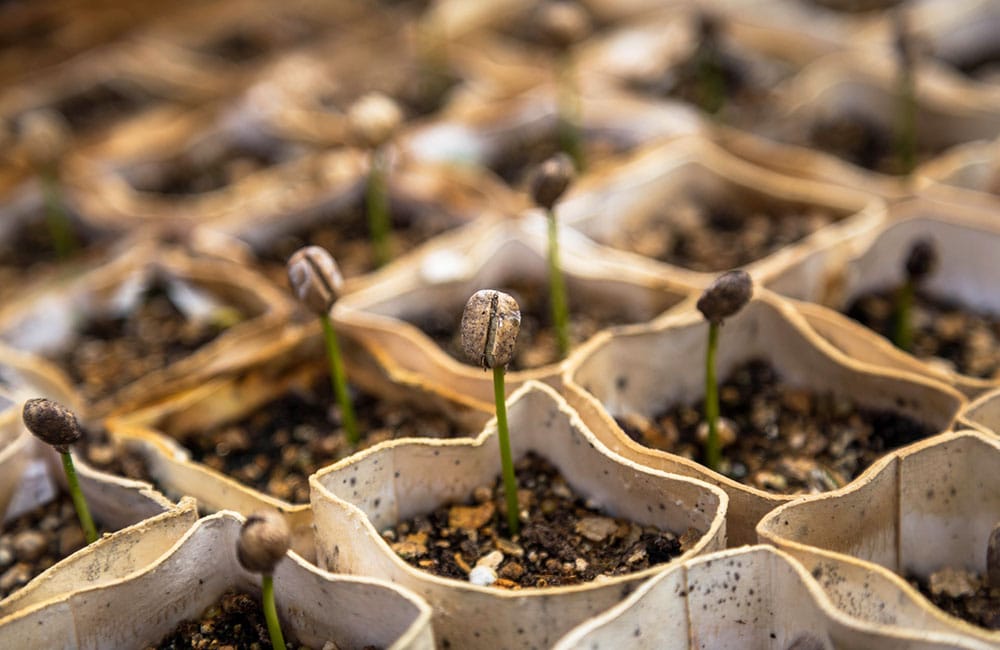
The care and knowledge of the coffee grower are the first step in achieving quality coffee.
Commercial coffee
Bad coffee starts at the source and is one in which none of the above is taken into account.
These coffees tend to be low-quality robusta and arabica varieties. Even if fantastic locations are chosen for their cultivation, they can never be as unique as those reserved for small, high-quality lots.
And here lies the sword of Damocles of commercial coffee: it requires large quantities at affordable prices.
This leads to much more mechanized pruning, care, and harvesting processes. Neither of these processes can afford the necessary time or qualified personnel to achieve an excellent final product. It's an equation in which greater quantities always mean less care and quality .
Not to mention that many of these coffees are stored and not used in the current harvest, but are instead traded in futures on the stock exchange.
Harvesting is also done when it's due, not when the fruit is needed. This is because it's done by machine, as in the large coffee plantations, the crop must be harvested before the next harvest is planted. And for this, there are few available workers and very low wages—even child labor.
Monocultures lacking biodiversity, the use of chemical pesticides, poor processing care, and poor selection of cherries and green beans are some of the major problems facing commercial coffee.
Commercial coffee, broadly speaking, is bad in its intrinsic quality, in its marketing and traceability philosophy, bad for coffee growers, for the workforce that works it, for the environment, and this has a very obvious result on the palate, at the tasting table.
2. Coffee processing
The next step after harvesting the coffee cherries is processing and drying them. Once again, the coffee farmer plays a very important role. Although in many cases, especially on small farms, coffee farmers can take the cherries to central washing stations or to a cooperative.
Once the cherries are picked at their peak ripeness, they must be processed. There are several methods: washed, natural, honey, fermented, etc. The differences in these processes will create different cup profiles.
The differences in processing are related to the timing of the cherries' pulping. In a washed process, the cherries are pulped and washed with water; in a natural process, they are allowed to dry and then threshed. Honey and fermented varieties differ from each other.
The idea is that, to obtain good coffee, the coffee farmer or those working at the washing station choose the processing that best suits the profile of each coffee.
Another important element in this phase is batch creation. To achieve a uniform profile in which the chosen processing affects all coffee cherries equally, they must be from the same origin, variety, and even harvest day.
This is one of the reasons why single-origin batches are created.
Another reason for creating single-origin batches is to be able to apply different roasting and brewing profiles.
Coffee is a fresh, seasonal product, so each harvest and location will have different harvesting, processing, and other times . Respecting this is one of the keys to obtaining quality coffee.
And, once again, coffee growers perform essential work. Therefore, they must be paid appropriately for the work and quality they offer.
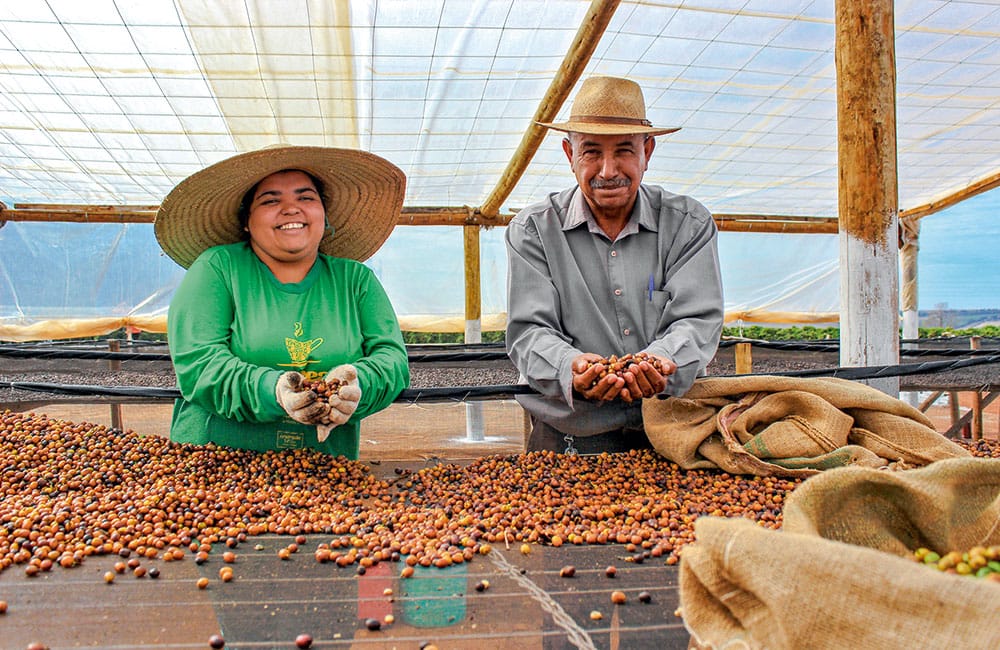
Coffee growers controlling the drying process of a coffee
Commercial coffee processing
In commercial coffee, origin, season, or what best suits a particular coffee are not considered. Batches from different origins and seasons are blended and processed in a standard way, usually washed.
This eliminates the organoleptic differences due to each origin, variety, terrain, harvest, etc. A standardized profile is created that brings together all cherries regardless of whether they are ripe, have defects, or their variety or origin.
At the time of drying, care is not taken to ensure that it is carried out uniformly, resulting in some very dry seeds and others that are green.
All of this also affects one of the following stages, roasting, since a very dark roast will be required to hide any defects. But let's not get ahead of ourselves.
3. Conservation, export and transportation of coffee
Once the coffee has been processed and dried, it's ready for export. During this phase , it's very important to store it in bags and sacks that protect it from direct light and extreme temperatures.
This is the moment when coffee export/import companies play a very important role, as do the roasters we work with directly for some batches.
At Ineffable Coffee, we have several batches of direct treatment , and we are constantly adding more collaborations of this type.
The importance of exporters working with single-origin and seasonal lots is that they allow roasters to offer fresh, seasonal coffees. Specialty coffee should always be fresh and seasonal.
Furthermore, exporters and roasters who work directly with coffee growers pay fair prices for their products. This has a direct impact on coffee growers' quality of life.
Enjoy seasonal coffee, visit our store
Transport of commercial coffee
A commodity coffee is a coffee that has been priced and sold, probably on exchanges around the world. Therefore, it will never be seasonal or fresh.
It's a coffee that may have been stored for years before it reaches the industrial roaster. Along the way, it will have lost many of its few qualities because it won't have been carefully preserved or transported.
Furthermore, it's a coffee that leaves a pittance as payment to coffee growers, since there's a large chain of intermediaries.
And it's a coffee that doesn't benefit the environment, as much of it is wasted or discarded, spoiling the resources used to grow it.
4. Coffee roaster
When a specialty coffee roaster purchases a coffee, they have made a prior selection and cupped it. In other words, a roaster chooses a coffee based on the preparation method (espresso, filter, etc.) and the desired profile in the cup.Once the coffee arrives, the roaster will adjust the roast profiles to get the most out of each coffee. The roaster will likely have a personal preference—there are darker and lighter roasts—but they will prioritize what that particular coffee needs over your personal preference.
This phase is critical and allows the coffees to truly reach the full potential hidden within each seed, which reflects all the previous steps.
The roaster will ensure that the coffee is traceable to its origin if they haven't imported it themselves. They'll want to know the location of the crop, the altitude, the process used, etc. They'll conduct exhaustive quality control on each coffee to ensure they roast it to the highest standards.
Once roasted, it will be properly packaged in airtight bags with one-way valves. The package will accurately reflect the most important information, such as place of origin, farm, altitude, harvest, and tasting notes.
Specialty roasters seek to make a name for themselves through the quality of their coffees, not through unfounded marketing.
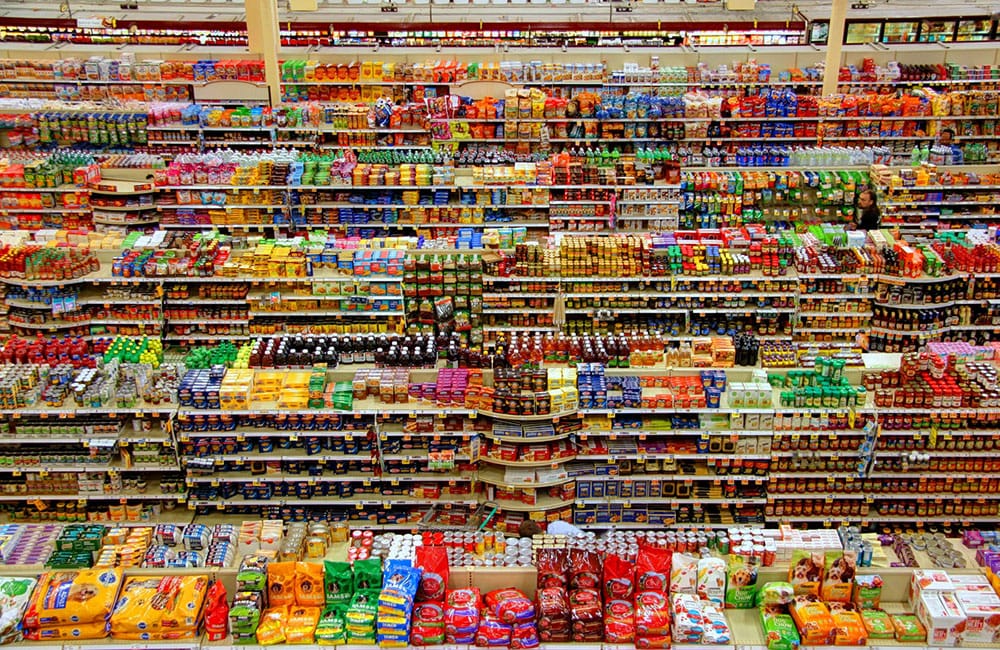
Commercial coffee line in a supermarket
Commercial coffee roaster
An industrial roaster takes virtually none of the above into account. They can't. They receive coffees from mixed origins, different seasons, and varieties. Their challenge isn't to highlight the best of each coffee, but to hide its flaws. That's why very dark roast profiles are often used.
Big coffee brands want their coffee to always taste the same, but that's impossible unless they hide all the subtleties of each coffee. It's like wanting all melons to taste the same.
The only way is to add a lot of sugar, until it almost doesn't taste like melon anymore.
Another practice—horrendous, we might say—of some industrial roasters is to add sugar/glucose to the coffee when roasting. This is torrefacto coffee, a very dark, almost burnt coffee roasted with sugar.
Roasted coffee not only offers nothing to the palate, but it is also bad for your health.
Finally, on the packaging of a commercial coffee, we'll only see the brand of the coffee, but little or no information about it. In some cases, the country of origin may be indicated, but this is like saying olive oil from Spain—there's a lot of it, and it's very different. A commercial coffee is known for its marketing, not its quality.
5. Sale and preparation of coffee
Once the coffee is roasted and packaged and reaches the cafeteria or our hands, the fifth phase begins: preparation.
If we're talking about a coffee shop, there's an intermediate step: selling the coffee. Roasters who work with specialty coffees usually have direct contact with coffee shops.
Roasters offer coffee shops fresh, seasonal coffees that change constantly. They will also offer different coffees for different methods. The contractual relationship between them is usually open and is based on the quality of the coffees, as well as ongoing training and support.
Roasters don't provide machines, cups, or minimum purchases. They trust their coffee, and that's their best selling point.
On the other hand, coffee shops strive to get the best out of each coffee and will choose different coffees for each method.
Some signs of quality coffee at a coffee shop include, for example, displaying information about each coffee they serve and providing you with information about it. Another sign could be the care and cleaning of the espresso machine. Another sign might be offering other brewing methods such as AeroPress, batch brew, or V60.
These are just a few details, but it's best to talk to the barista and ask.
Baristas are the last human link in the coffee chain and play a vital role in conveying the entire process to the consumer—and, of course, in preparing quality coffee.
If we're going to make it ourselves, you've probably already checked all the previous steps to ensure it's a good coffee. If you want to know the best way to prepare it depending on the method, you can check out our guides.
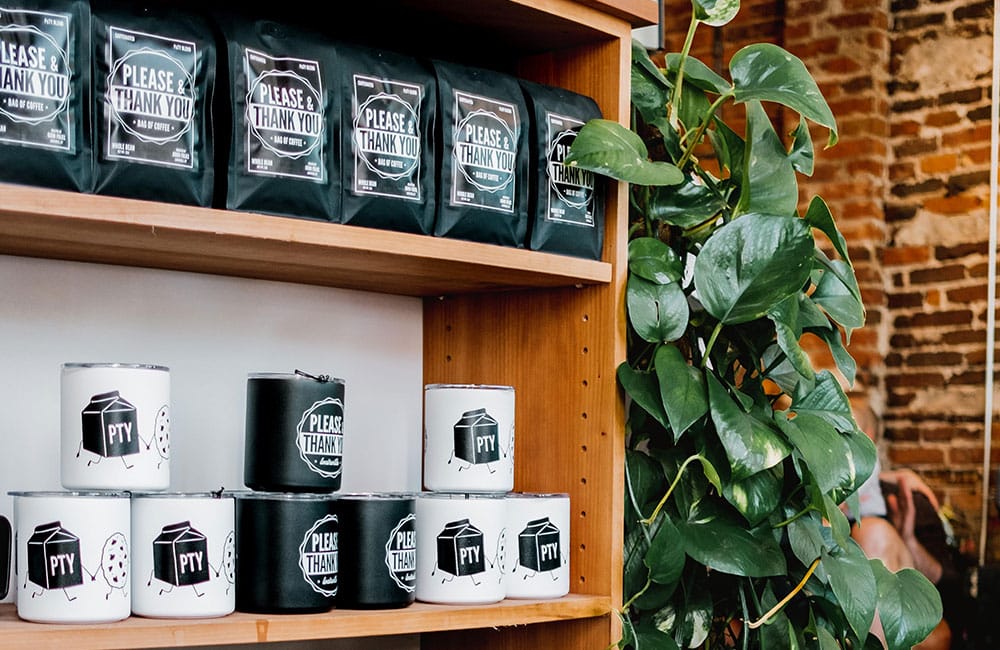
Coffee line in a specialty coffee shop
Preparation and sale of commercial coffee
Industrial coffee roasters, whose coffees cannot be distinguished by their quality, rely on aggressive sales and marketing techniques.
For example, an industrial roaster will work with salespeople who offer coffee shops a range of services in exchange for a contract with minimum quantities and for a specific period.
They may offer to provide the machine, cups, sugar cubes, napkin holders, awnings… the larger the package, the higher the contract. In the end, coffee shops pay a price that isn't related to the coffee itself, but rather to the services associated with their contract, in which the quality of the coffee is only a fraction of the total.
Furthermore, it will be a coffee that will likely fit all or almost all of the above definitions of a commercial coffee.
And if you're the one at home facing the dilemma of which coffee to buy... you're probably basing your decision on marketing effectiveness or price.
Quality coffee vs. commercial coffee
In this table we have tried to summarize all of the above:| Specialty coffee or quality coffee | Commercial or industrial cafes |
| Phase 1: From seed to coffee shortage | |
| Importance of the place of cultivation, the terrain, the climate, rainfall, etc. | It doesn't matter where you grow, where you stand, where you climb, where you land, where you climate, etc. |
| Importance of the species and variety of the plant, always Arabicas | Robustas or low-quality Arabicas |
| Natural, chemical-free care | Mechanized care and use of chemicals |
| Selective harvesting at its optimum point of ripeness | Mechanized harvesting without attention to different ripening stages |
| Environmentally sustainable | Not sustainable |
| The coffee grower as a key piece | The coffee grower is a workforce |
| Phase 2: processing and drying | |
| Creation of batches by origin, season, harvest day, etc. | Volume coffee, regardless of origin, season, etc. |
| Different types of processing depending on the coffee | A standard processing |
| Drying evenly and carefully | Automatic drying |
| Importance of coffee growers' know-how | The coffee grower is a workforce |
| Phase 3: Export and Transport | |
| Fair price and direct treatment | Abusive prices and stock market listing |
| Conservation and transportation to maintain lots and qualities | Conservation and transportation in large quantities without batch value |
| Fresh and seasonal batches | Blends of coffees from different seasons, origins, etc. |
| Phase 4: The Roaster | |
| Fresh and seasonal coffees | Large volume coffee |
| Roasting tailored to each coffee to highlight quality | Standard roast, very dark, sometimes torrefacto |
| Correct packaging, with one-way valve | Standard packaging, without valve |
| Show all the traceability of the coffee on the package, quality comes first | Show only the brand, marketing takes priority |
| Phase 5: Sale and preparation of coffee | |
| Direct dealings with coffee shops | Indirect treatment |
| Relationship based on coffee quality, support and training | Contractual relationship based on providing services unrelated to quality |
| Changing, fresh, and seasonal coffees | Standard coffee, regardless of season |
| They show all the information about the coffee they serve | They do not show information |
| Trained baristas | They don't usually have baristas |
| Quality comes first | Marketing comes first |
Is specialty coffee expensive?
If after all this you still think specialty coffee is expensive, we suggest you rephrase the question.
Instead of asking why specialty coffee is expensive, maybe you should ask yourself why commercial coffee can be so cheap.
